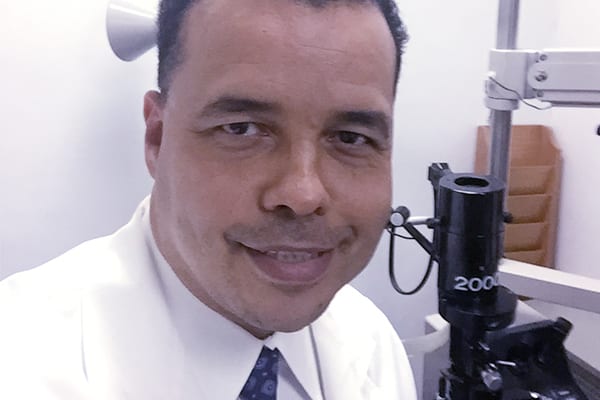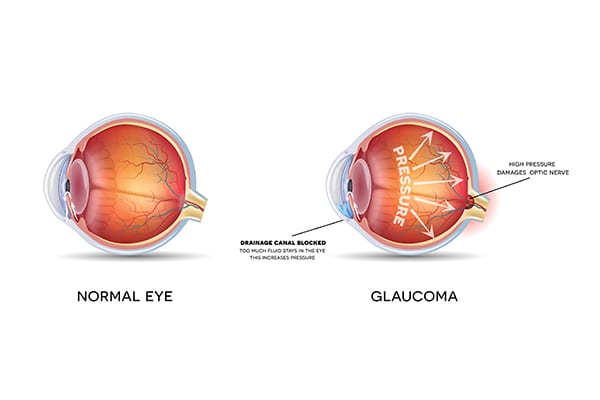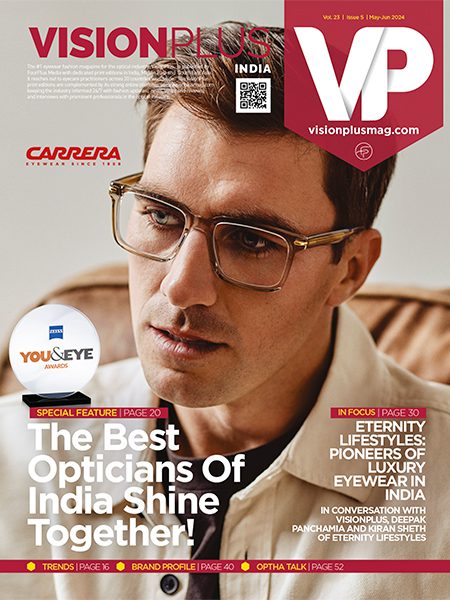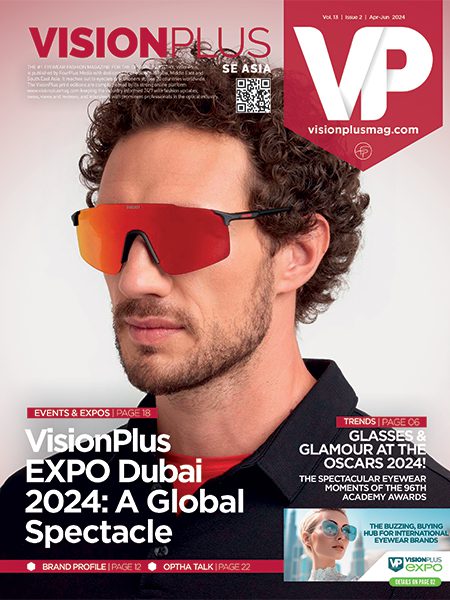

Glaucoma: A global view
January was Glaucoma Awareness Month and everyone around the globe was doing their bit to help and treat people with Glaucoma
Some insights from subject matter experts from UAE, India and USA
How Opticians should handle patients with Glaucoma
Dr. Laroche, the President of Advanced Eyecare of New York Glaucoma Expert, shares his insights on Glaucoma.

Glaucoma is the leading cause of blindness in the world today. There are over 80,000 people that go blind from glaucoma every year in the US. It is the leading cause of preventable blindness in African Americans and people from the Caribbean.
The most identifiable cause of glaucoma is the enlarged lens or cataract in the eye. Early cataract surgery and trabecular bypass has become the best option to stop vision loss in patients with glaucoma in my practice.
The current use of eyedrops and lasers help to lower intraocular pressure but do not address the causative mechanism of the glaucoma being the enlarged lens. Incisional cataract surgery and glaucoma surgery is often needed to truly stabilize glaucoma.
All people should be screened regularly for glaucoma as part of a medical eye exam. Screening should consist of an eye examination consisting of gonioscopy (examination of the drainage angle), intraocular pressure measurement with Goldmann applanation tonometry, and a dilated optic nerve examination.


If there appears to be any damage to the optic nerve or abnormal pressure, then a visual field test should be performed, and optic nerve photos taken. Persons with thin corneas should be more aggressively monitored and treated for glaucoma as the disease tends to be worse in these patients. Opticians can play an important role to ensure their clients are informed about having their eyes checked for glaucoma and educating them to be compliant with their follow up appointments with their ophthalmologists or optometrists. Opticians should also remember that patients with low vision from central vision loss with glaucoma may also need magnifiers. If someone has elevated eye pressure or glaucoma and feel that you they may be losing vision, they can also recommend they seek the care of a glaucoma specialist for a second opinion.
DON’T GO BLIND FROM GLAUCOMA! People with conditions such as glaucoma and diabetic retinopathy that could lead to blindness if left unchecked need to stay particularly vigilant with their checkups.
Glaucoma: Treatment and Latest Advancements
Dr. Salman Waqar, Consultant Ophthalmic Surgeon, Specialist in Adult Glaucoma and Cataract Surgery at Moorfields Eye Hospital Dubai (MEHD), shares his insights.


Glaucoma treatment has improved considerably over the last five years. Today, there is a wide variety of treatment options available for glaucoma, ranging from eye drops to laser treatments and surgical options.
Mild glaucoma can be treated with simple eye drops, used once or twice a day, while moderate glaucoma may require laser treatment, and advanced cases can be eased with minimally invasive surgeries such as trabeculectomy and aqueous shunt device insertion. If the patient suffers an intolerance to eye drops, special laser procedures can be performed to treat glaucoma without the need for long term drops.
While these are the standard approaches to cure glaucoma, we find that a tailored treatment that is suitable for the patients’ specific ocular ailments usually yields the best results.
Assessment for glaucoma requires a careful and thorough clinical examination followed up by some specific diagnostic tests. These include a precise measurement of the peripheral visual field and a scan of the nerves in the back of the eye.
Other tests include a review of the drainage channels of the eyes (known as gonioscopy) and measurement of the thickness of the cornea (known as pachymetry). With all this information at hand, an appropriate treatment plan can be implemented.
Recovery from laser treatments is usually very quick allowing patients to get back to routine activity the next day. For surgery, you can get back to routine activity in a fortnight, although the full recovery may vary from between four to six weeks. To speed up the eye healing process and to optimise the chances of a successful outcome eye drops may be required for a few weeks after the procedure.
Glaucoma treatment is designed to halt the progression of the condition and to lower the eye pressure to acceptable standards, thereby preventing any further visual damage. This means any damage that may have already occurred before diagnosis and treatment will remain unchanged. If a cataract is present, a combined cataract and glaucoma operation can also be performed which provides the opportunity to improve vision affected by the cataract
Glaucoma – The Silent Killer
At the India Vision Institute – VisionPlus Magazine hosted ‘Glaucoma – The Silent Killer’ panel discussion on January 22nd, 2021, panellists shed light on the proverbial darkness that shrouds this silent pallbearer of gloom and exchanged ideas on best practices and public health strategies to combat Glaucoma.
Glaucoma often goes undetected because of a lack of awareness among patients. “Catch them early, because early detection can help delay blindness,” said Dr Mani Baskaran. “In India, a large number of Glaucoma patients are not aware of their condition. Eye care professionals should work towards making the public aware. A higher level of awareness in society will make more people come forward and have their eyes examined for this condition,” Dr Baskaran added. If you are above the age of 40, it is highly recommended that you get an intraocular pressure check done, at the very least. Gonioscopy and visual field tests can also help in detection, according to Dr Gothwal


Access to screening facilities and tests required for the early detection of Glaucoma in remote areas is an issue to which Vinod Daniel drew attention. “It is important for undergraduate programs to impart knowledge essential to developing basic skill sets such as carrying out intraocular pressure tests and following best practices,” noted Dr Ramesh S Ve. While progress has been made on the education and skill-development front, many eye care professionals in remote areas still lack skills such as clinical decision-making with imaging techniques and developing co-management strategies for patients. Despite creditable efforts and investment by private educational institutions in skill development and capacity-building, there is considerable room for more government spending in eye care education and service delivery because of the persisting disparities between India’s different regions and the urban-rural divide.
According to Dr Ramesh S Ve, the last two decades have seen many Indian startups develop affordable retinal imaging systems. These systems don’t just help detect Glaucoma; they also help diagnose other sight-threatening diseases. “Glaucoma can lead to difficulties in reading, walking, driving, and even facial recognition,” Dr Gothwal said. These challenges become especially daunting when both eyes have high visual field loss. Technology has changed the way co-management strategies and low vision rehabilitation are provided. This can help people deal with vision loss and make them competitive in the job market. While the obstacles Glaucoma places may seem imposing, they are not insurmountable.
High levels of awareness, regular vision screenings for the right demographic group, and the smart use of modern technology and quality service delivery will make our response to this silent killer more effective.







